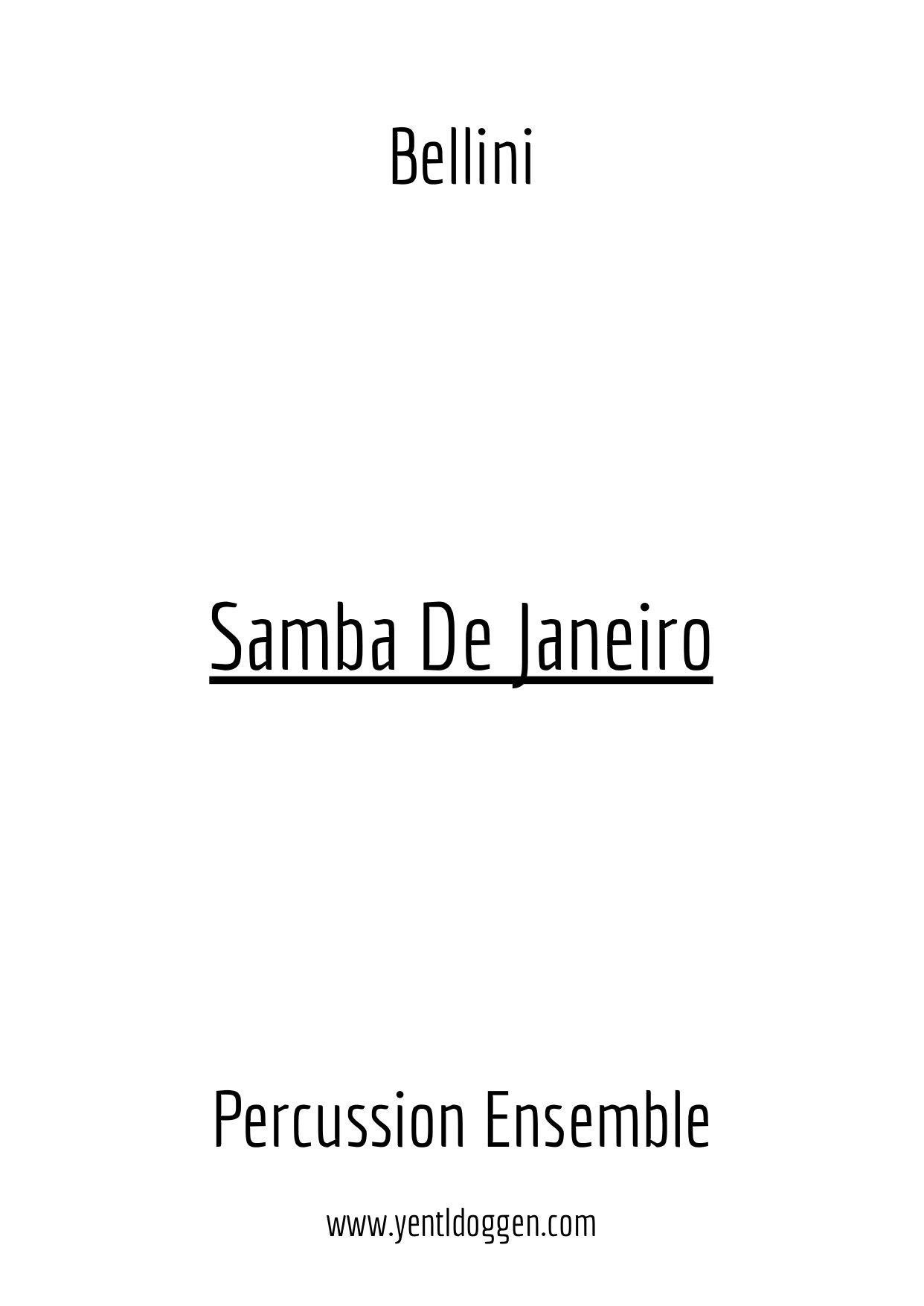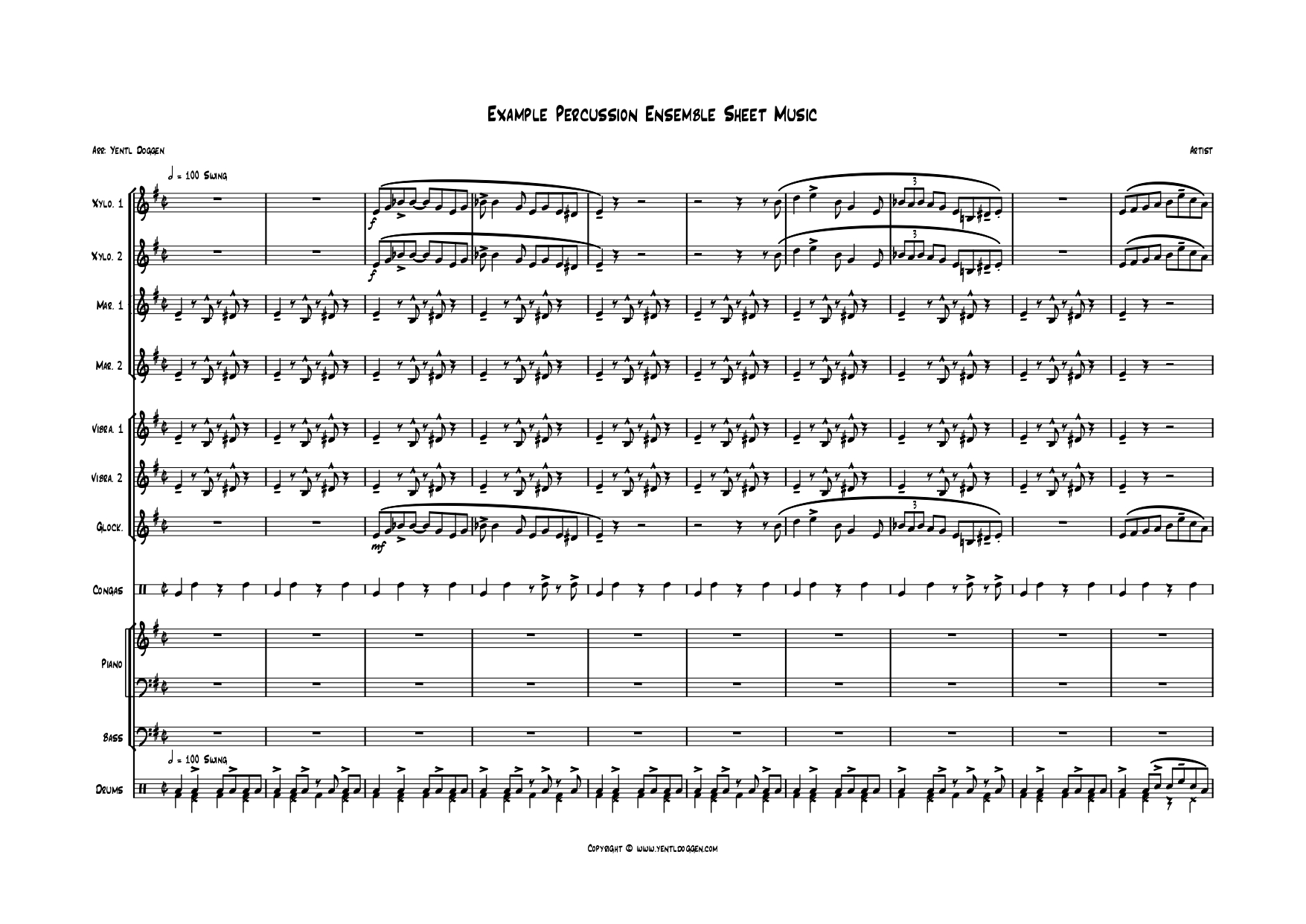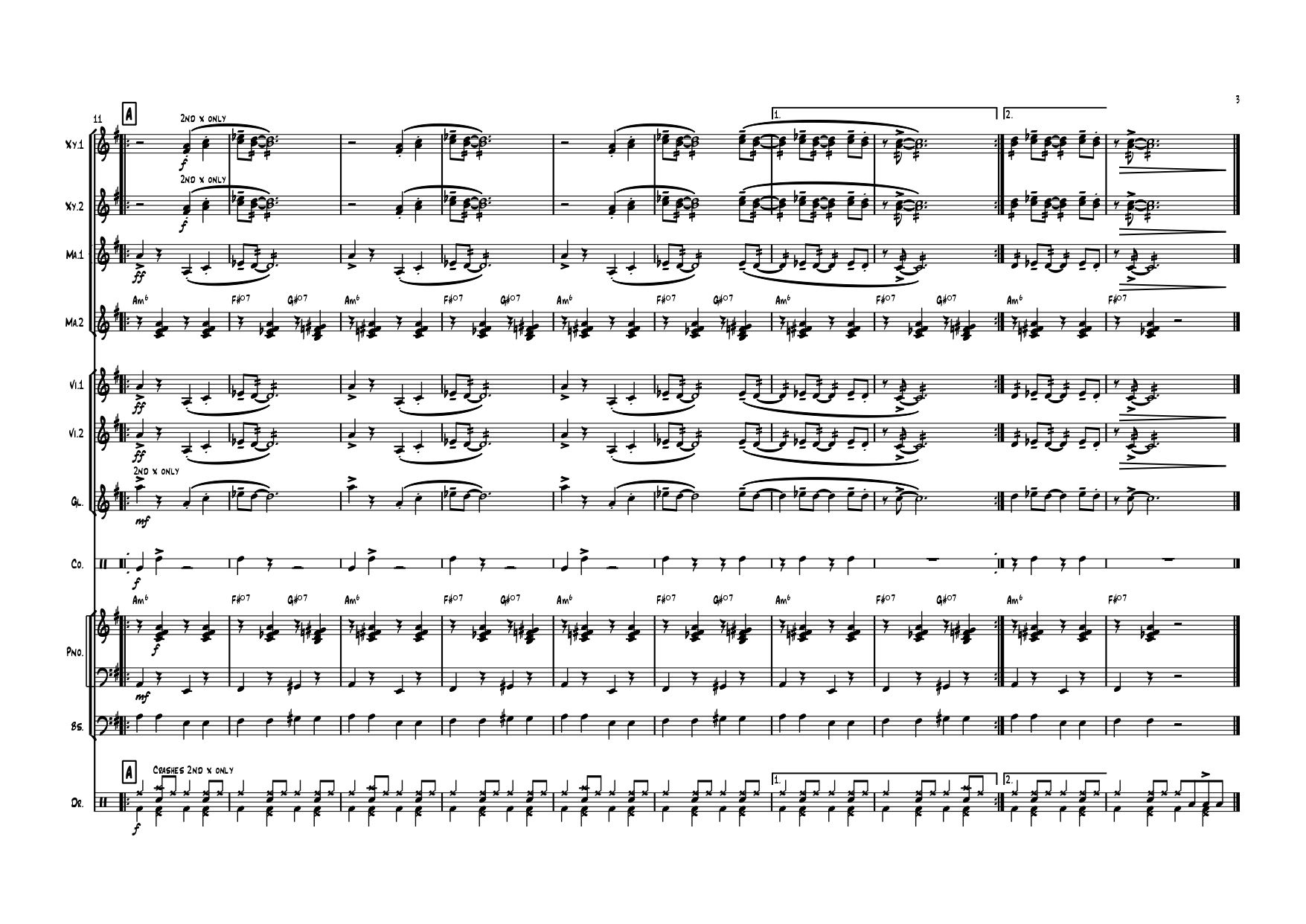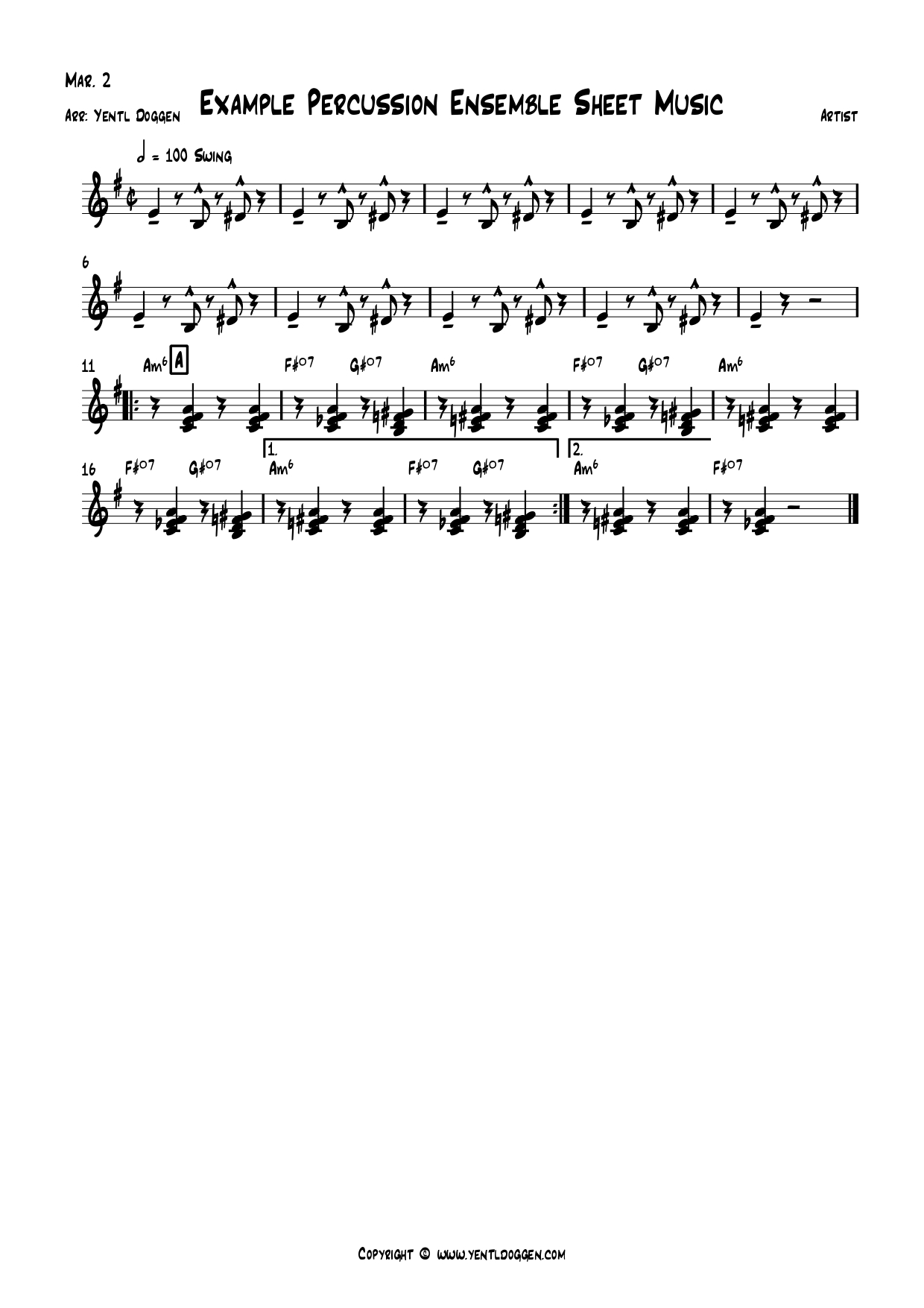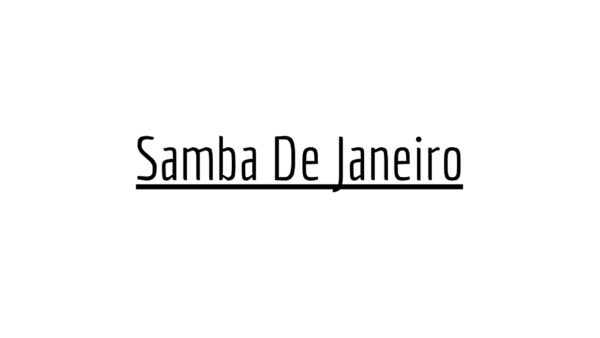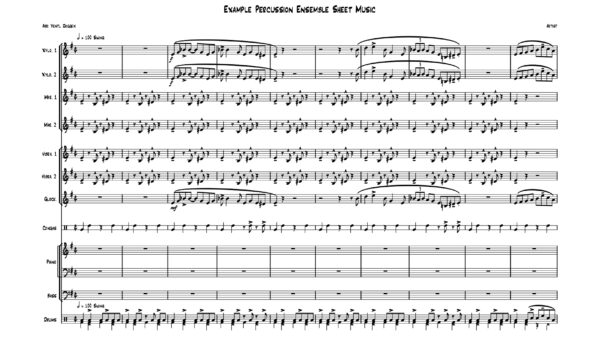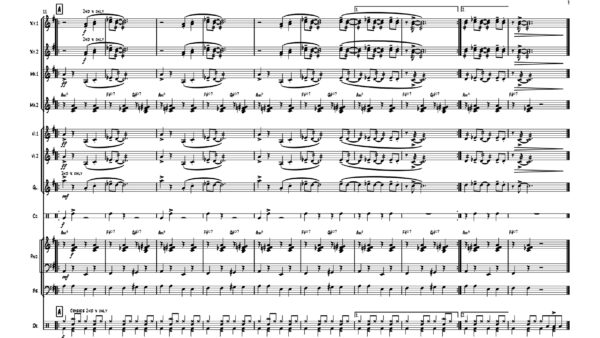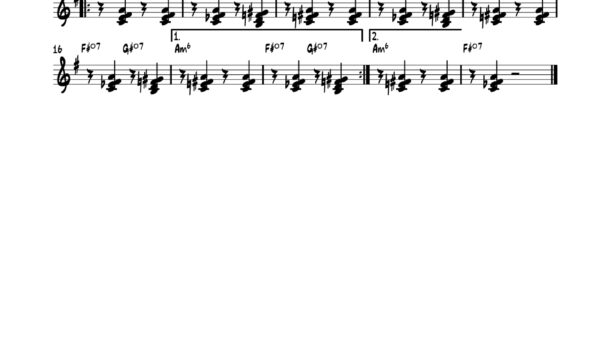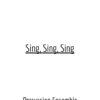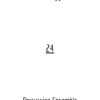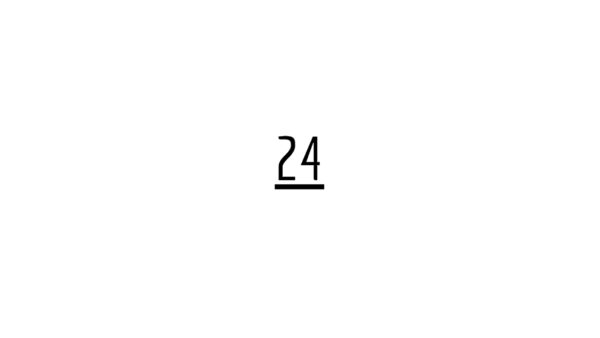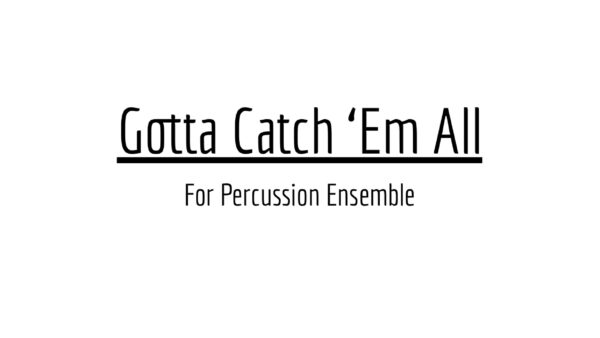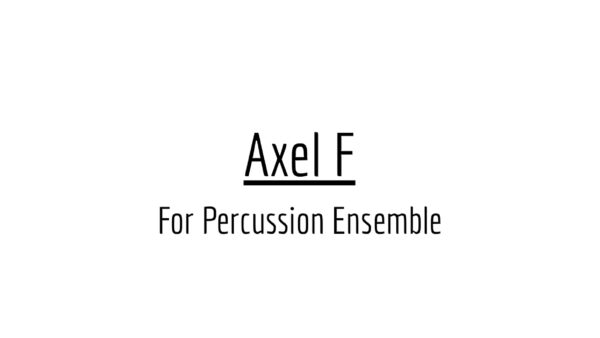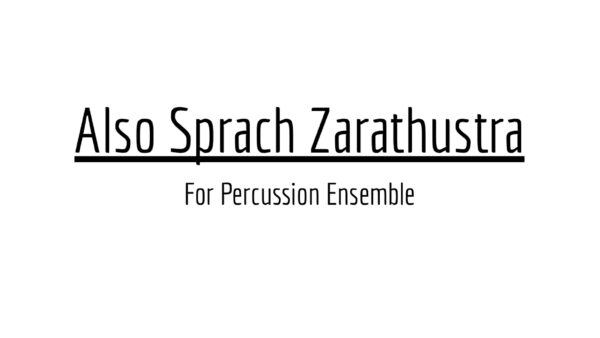Samba De Janeiro for Percussion Ensemble | Full Score PDF
Digital download (PDF) for the Samba De Janeiro for Percussion ensemble sheet music!
Samba De Janeiro
The percussion ensemble version of Samba De Janeiro is based on the popular Bellini disco version. However, the original sample comes from Airto Moreira’s song, Tombo in 7/4, released in 1972. The German pop group Bellini released the song in 1997, becoming a massive hit throughout Europe and even winning the award for best dance single. The melody became well-known during the 2008 European Football Championship as they played it after every goal!
Samba De Janeiro for Percussion Ensemble had the audience going wild multiple times! In the years we played the song with our percussion ensemble, it grew into a real hit at our concerts. I finished the first percussion ensemble arrangement of Samba De Janeiro in 2012, making it one of the first Drum- & Percussionband Paal songs that I arranged. However, in 2014, I finalised that version into what it is today. To make the effect of the opening bars bigger, we usually kept the song as an encore at the end of our concerts. Get those Mexican hats out, and let the party begin!
Samba De Janeiro for Percussion ensemble
I wrote the initial percussion ensemble arrangement for Samba De Janeiro for a 12-players orchestra. However, the ensembles that played this arrangement afterwards usually had fewer or more people. As such, the 12-player version I’m presenting here today can be narrowed down to 10 players or expanded to 16 players. Adding players to the arrangement is possible by doubling the xylophone and marimba parts an octave higher. Below I’ll give more information on every single element in the format:
Xylophone, Vibraphone 1 & Glockenspiel:
The Xylophone, Vibraphone 1, and Glockenspiel parts play all the main melodies in Samba De Janeiro for Percussion Ensemble. Depending on the skill level of the musicians and the ensemble, it is possible to simplify the central theme. As for the current notation, the objective is to make it swing where it is notated and to play it straight where it is notated. To simplify the arrangement, I recommended playing all the swing figures straight.
Vibraphone 2, Marimba 1:
Vibraphone 2 is essential in Samba DeJaneiro as it ensures the song has a drive and constant harmonic foundation. This part and the Marimba 1 part are fun to play. Although if you go above the recommended BPM, it gets very demanding to play and might drag a bit on the music. It is these parts that set the recommended tempo in your ensemble.
Marimba 2
As marimba one and vibraphone 2, marimba 2 is here to play the chords. The difference between the two marimbas is that this one mainly focuses on playing the accents, making them stand out even more, giving that extra element to the music of Samba De Janeiro for Percussion Ensemble.
Bassdrum
Ah, yes, the bass drum part! Although Samba De Janeiro is mainly a samba song, we are playing a disco version. The bass drum makes sure to give the beats and drive the ensemble. The four bars solo before the B-section is free for improvisation.
Agogo Bells & Tambourine
The agogo bells and tambourine part is fun but not easy to play. It constantly alternates between the two agogo bells and the tambourine, so you should mount it on a stand. When I wrote the initial version of Samba De Janeiro, this part said, play like you know what you are doing, and although I removed that text for the commercial version, it still counts!
Bongos
Although the name says bongos, this part also works on congas. The bongos and Agogo Bells work almost together as they play the same samba rhythm underneath the rest. It is crucial to ensure the synchronised sound between the bongo and the Agogo Bells and Tambourine part! I think this is an essential part as it gives the song its authentic samba feel.
Keyboard
The keyboard part is pretty straightforward. The right hand mostly plays chords, and the left hand supports the bass part. Some chords linger, and it should also sound that way. Necessary for the keyboard is that it is played with a synthesiser sound.
Bass
You can play the bass part in Samba De Janeiro on both the Bass guitar and the marimba. The accents become relevant when played on bass guitar, and you can play the eight notes evenly. I wrote the part for a 4,3-octave marimba, although the off-beat can go an octave lower when played on a 5-octave marimba.
Drums
The drum part in this arrangement is plenty of fun to play. The drum plays a disco beat throughout the song while making little nuances on the hi-hat, changing between a single and double off-beat and an open hi-hat. The drummer has to drive the ensemble.
My website has multiple ways to keep in the loop with music and travel-related updates. Make sure to follow my Instagram and Facebook pages to get the latest content on your socials. To get the updates in your mailbox, subscribe to the newsletter. I will post plenty of free drum lessons and other music and drum-related advice on this website in the future! Check out the other music education posts if you haven’t already!


